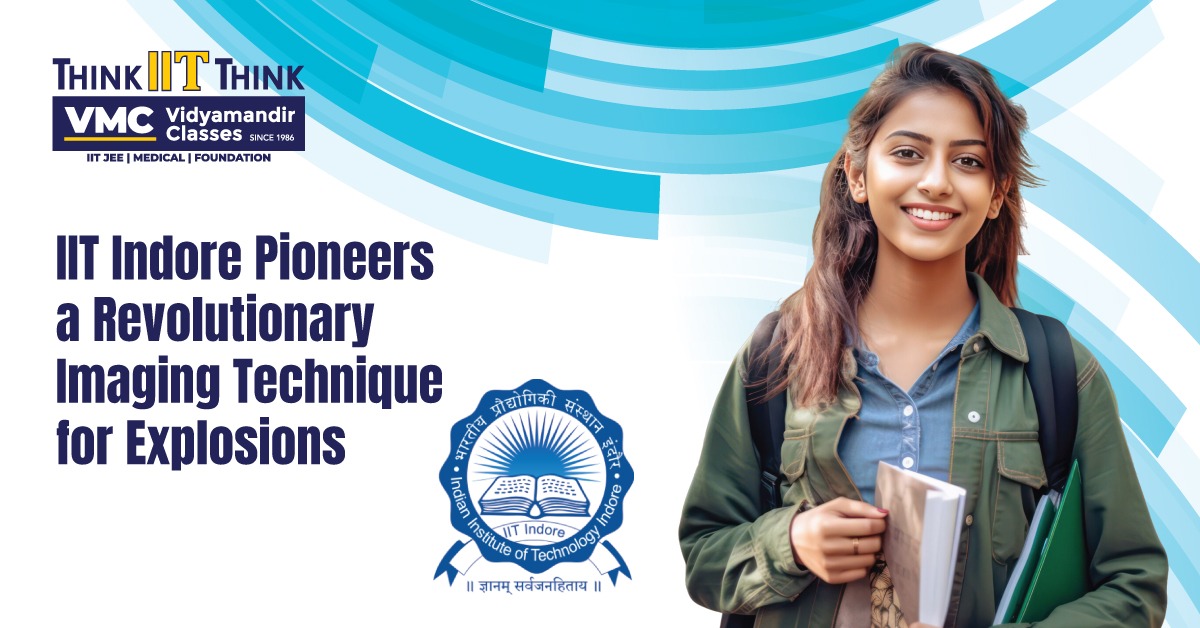IIT Indore Pioneers a Revolutionary Imaging Technique for Explosions
 Posted On
Posted On
123 total views, 1 views today
The Indian Institute of Technology (IIT) Indore, in partnership with the Defence Research and Development Organisation (DRDO), has made significant strides in the field of high-speed imaging. This collaboration has led to the development of an advanced technique that captures ultra-precise images of minute movements during explosions. This groundbreaking method is poised to revolutionize the defence and aerospace sectors by providing unprecedented insights into explosive events.
The Challenges of High-Speed Imaging
Capturing the intricate details of fast-moving particles during explosions has long been a formidable challenge for scientists. Traditional imaging techniques, such as shadowgraphy, Schlieren photography, and X-ray imaging, have been the go-to methods for visualizing these rapid phenomena. However, these techniques are limited by their exposure times, which typically hover around 1 microsecond. Given the incredible speed of explosions, this exposure time often proves inadequate, resulting in blurred images that lack the necessary detail for thorough analysis.
The inability to capture clear, detailed images of explosive events has been a significant hurdle in research, as it leaves scientists with incomplete data about the behavior of high-speed particles. This gap in information can hinder the development of advanced technologies in fields such as defence and aerospace, where understanding the minutiae of explosions is crucial.
A Breakthrough in Imaging Technology
Recognizing the limitations of existing methods, a team led by Professor Devendra Deshmukh at IIT Indore set out to develop a new imaging technique that could overcome these challenges. The result of their efforts is a novel approach that leverages the principles of Digital Inline Holography. This innovative technique allows for the capture of highly detailed images, even in environments filled with dust, smoke, or other visual obstructions.
In order to record the interference pattern produced when a light wave interacts with an object, digital inline holography is used. The hologram, or pattern, holds all the information required to recreate the object’s three-dimensional appearance. By using this method, Professor Deshmukh’s team has achieved a level of clarity and precision that was previously unattainable in the study of explosive events.
Unveiling the Dynamics of Explosions
One of the most significant advantages of this new technique is its ability to dramatically enhance time resolution. Traditional methods, with their 1 microsecond exposure times, often miss the finer details of high-speed events. In contrast, the technique developed at IIT Indore can capture images with exposure times as low as 50 nanoseconds. This represents a 20-fold improvement in time resolution, allowing researchers to observe and analyze the behavior of particles during explosions with unprecedented clarity.
The system is capable of recording up to 700,000 frames per second, providing a real-time view of how particles move and interact in the chaotic aftermath of an explosion. This high frame rate is crucial for understanding the dynamics of explosions, as it enables researchers to track the velocity, acceleration, and spatial distribution of particles with exceptional precision.
The ability to capture such detailed information is a game-changer for scientists and engineers working in fields where understanding the nuances of explosive events is critical. For example, in the defence sector, this technique could lead to the development of more effective protective measures, as well as the design of advanced munitions that behave in a predictable and controlled manner. In aerospace, the insights gained from this imaging method could inform the design of safer, more reliable propulsion systems.
A Vision for the Future
The implications of this breakthrough extend far beyond the immediate applications in defence and aerospace. The ability to capture high-resolution images of fast-moving particles could have a transformative impact on a wide range of scientific and engineering disciplines. For instance, researchers in materials science could use this technique to study the behavior of materials under extreme conditions, such as high-velocity impacts or rapid thermal changes.
Similarly, in the field of combustion research, the ability to visualize the movement of particles in combustion clouds could lead to significant advances in the design of more efficient and cleaner-burning engines. The detailed insights provided by this imaging technique could also be invaluable in environmental science, where understanding the dispersion of particles in the atmosphere is critical for addressing issues such as air pollution and climate change.
IIT Indore’s director, Professor Suhas Joshi, emphasized the importance of this development, noting that it represents a significant leap forward in our ability to observe and understand high-speed phenomena. Joshi also highlighted the potential of this technique to unlock new possibilities in scientific research and technological innovation.
Closing Thoughts
The collaboration between IIT Indore and DRDO has yielded a groundbreaking imaging technique that holds the potential to revolutionize our understanding of explosive events. By overcoming the limitations of traditional methods, this new approach provides researchers with the tools they need to capture ultra-precise images of high-speed phenomena, leading to a wealth of new insights and applications.
As this technology continues to be refined and applied in various fields, it is likely to open up new avenues of research and innovation, driving progress in defence, aerospace, and beyond.




